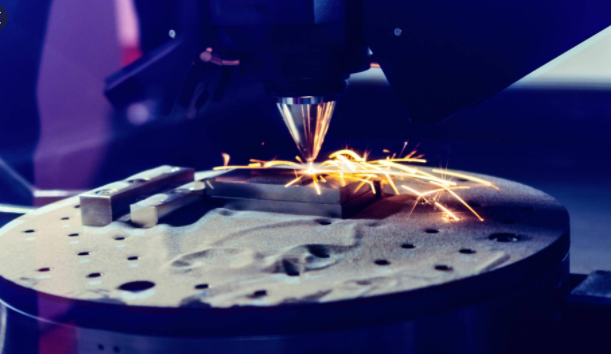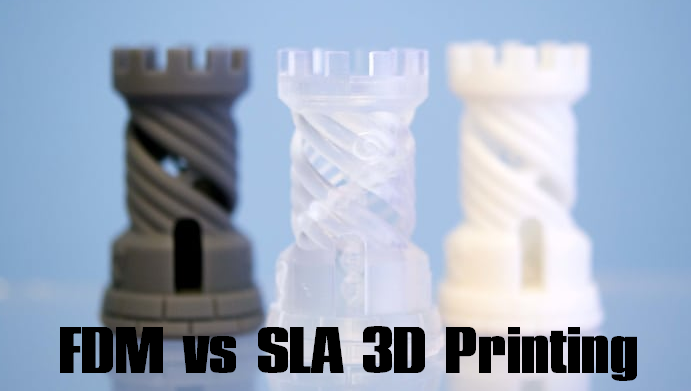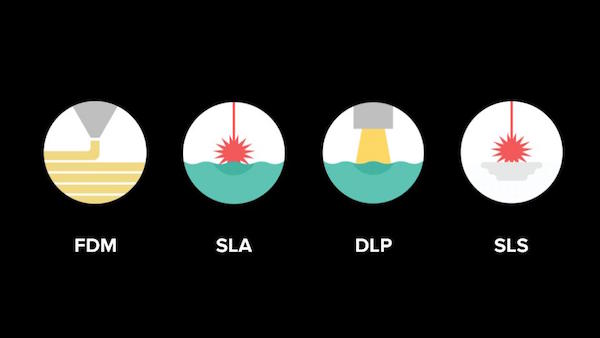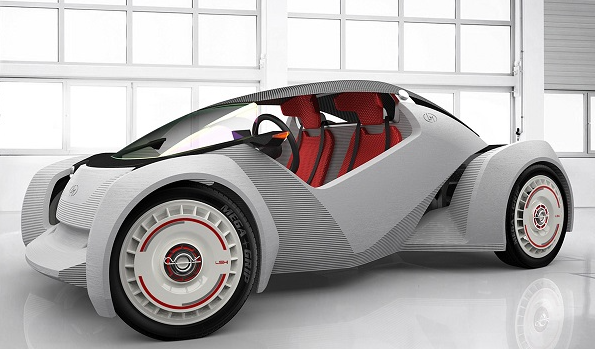- Home
- Machining techniques
- CNC Machining Services
- Cooperative supply services
- Designs
- Materials
- Finishing Services
- Shop
- Products
- Guide
- About Us
- Contact Us
2021.2.19
3D printing (3DP) is a kind of rapid prototyping technology, also known as additive manufacturing. It is a technology based on the digital model file, using powder metal or plastic and other adhesive materials to construct objects by layer printing. Generally speaking, 3D printer is a device that can “print” real 3D objects, such as printing a robot, printing toy cars, printing various models, and even food. So do you know what materials are available for 3D printing? Here we will share a 3D printing material list (part 2) and teach you how to choose the best and strongest material for 3D printing.

11. PLA
PLA is a plastic material that is a low-cost option for iterating translucent or opaque “quick draft” parts. It is mainly made of organic renewable compounds and can be used as a more environmentally friendly plastic choice than inorganic plastics. PLA provides good tensile strength, higher stiffness than ABS and equivalent strength to polycarbonate. Its melting point and HDT are very low, so it needs less heat and power in modeling. PLA is especially suitable for rapid concept verification and design verification. Ideal applications include early conceptual modeling, rapid prototyping and metal casting.
12. Ultra 9085 Resin
Ultra-9085 resin is one of the three kinds of high-performance engineering thermoplastics that can be used in FDM. It is the product of SABIC innovative plastics company and has been applied in many aircraft and aerospace products. Ultra 9085 resin is a FST certified material, which means it meets the standards for flame, smoke and toxicity. The FST properties of this material will not change when processed in the Fortis system. Therefore, transportation companies that must meet strict requirements usually need to make ULTEM 9085 resin. In addition, there are certified levels that provide complete production traceability and meet stringent Aerospace certification requirements. Even if your application does not require FST rating, please do not ignore this material. Ultra 9085 resin has excellent strength, durability, heat resistance and chemical resistance, which is a good choice for many applications. It’s a tough material that can withstand impact.
13. Ultra 1010 Resin
ULTEM 1010 resin is another product of SABIC innovative plastics. It is the latest high-performance FDM thermoplastic, providing excellent strength and thermal stability. With the lowest coefficient of thermal expansion of all FDM materials, ultem1010 resin is an ideal choice for many industrial processing applications and other parts requiring a unique combination of strength and thermal stability. Ultra 1010 resin can withstand high pressure steam disinfection, and has been certified by food contact (NSF 51) and biocompatibility (ISO10993). It is an ideal choice for professional applications including food production tools and customized medical equipment. ULTEM 1010 resin is the first material approved for use in contact with food. It also provides the highest heat resistance, chemical resistance and tensile strength of all FDM thermoplastics. It is very suitable for all kinds of applications, from aerospace applications to deep automotive applications to composite materials processing.
14. Ppsf / PPSU
The first high performance engineering thermoplastic that can be used in FDM is ppsf (also known as PPSU). This excellent material has been added to deep applications and other advanced applications where other plastics may be affected by thermal and chemical attacks. Ppsf has excellent heat resistance (hot deformation temperature is 372 ° f / 189 ° C) and chemical resistance. Its mechanical properties are better than other FDM materials. Ppsf is resistant to oils, gasoline, chemicals and acids. Ppsf can be disinfected as ABSI and abs-m30i. However, due to its temperature characteristics and chemical resistance, you can use other disinfection methods, such as high-pressure steam disinfection and plasma, chemical and radiation disinfection.
15. FDM Nylon 12
FDM nylon 12 is a new nylon product. Nylon 12 and current FDM materials. The product portfolio is complementary to support new applications that require repeated snap fit testing, high fatigue resistance, strong chemical resistance, and press (friction) fit inserts. Nylon 12 is mainly used in aerospace, automotive and consumer goods industries, providing unparalleled toughness and simple and clean dust-free process. Compared with any other additive manufacturing technology, FDM nylon 12 parts have 100 to 300% higher elongation at break and excellent fatigue resistance.
How To Select The Best And Strongest 3D Printing Materials?
All you have to consider when it comes to suitable model is cost, appearance, details, mechanical properties, mechanical properties, chemical stability, special application environment and other factors. Although there are various factors, based on the purpose of the model, it can be roughly divided into two categories: appearance verification model and structure verification model.
Appearance verification model: hand model designed and made by engineers to verify the appearance of products or directly used model with high appearance requirements. The appearance verification model is visual and touchable. It can intuitively reflect the designer’s creativity in the form of real objects, avoiding the disadvantage of “good drawing but not good making”. Appearance verification model making is essential in the process of new product development and product shape consideration.
Based on the requirement of appearance verification model, photosensitive resin 3D printing (including high-precision and high toughness ABS and transparent PC) is preferred;
Structure verification model: in the process of product design, from design scheme to mass production, it is generally necessary to make mold. The cost of mold manufacturing is very high, and the relatively large mold is worth hundreds of thousands or even millions. If the structure is unreasonable or other problems are found in the process of mold opening, the loss can be imagined. Therefore, the production of structural verification model can avoid this loss and reduce the risk of mold opening.
Based on the requirements of structural verification model, if the requirements of accuracy and surface quality are not high, it is recommended to choose materials with good mechanical properties and low price, such as PLA, ABS and so on.In addition, there are some special requirements. For example, if there are requirements for conductivity, metal materials are needed, or if you want to reverse make beautiful jewelry, paraffin is recommended.
Materials | Features |
ABS-M30 / ABSplus | Universal |
ABS-ESD7 | Antistatic Dissipation |
ABS-M30i | Biocompatibility |
ABSi | Translucent |
ASA | UV Resistant |
PC | Strength (tensile) |
PC-ABS | Toughness (impact) |
PC-ISO | iocompatibility |
PLA | Bioplastics for fast printing |
ST-130 | Designed for sacrificial tools |
ULTEM 9085 Resin | Excellent mechanical properties. After FST certification, provide ultra 9085 Aerospace resin materials |
ULTEM1010 Resin | Food safety and biocompatibility certification has high heat resistance |
PPSF | High resistance (heat / chemicals) |
FDM Nylon 12 | Strong (high fatigue resistance) |
FDM Nylon 12CF | The highest bending strength. Highest stiffness to weight ratio |
FDM Nylon 6 | High strength (impact), toughness (high fatigue resistance) |
Antero 800NA | Chemical resistance, wear resistance, low degassing |
FDM TPU 92A | High elasticity and elongation |
 Filament vs Resin 3D Printer – Difference Between FDM and SLA 3D Printing | CNCLATHING
Filament vs Resin 3D Printer – Difference Between FDM and SLA 3D Printing | CNCLATHING
 (Part 1)What Is The Best & Strongest Material For 3D Printing?
(Part 1)What Is The Best & Strongest Material For 3D Printing?
 Polyamide Vs. Nylon Vs. Polyester: Properties, Uses, Advantages & Disadvantages
Polyamide Vs. Nylon Vs. Polyester: Properties, Uses, Advantages & Disadvantages
 Spring Material Types (Properties, Grades, Uses) & Best Selection for Your Project
Spring Material Types (Properties, Grades, Uses) & Best Selection for Your Project
 3D Printer Comparison Guide – What Are Differences Among FDM, DLP & SLA And When To Use Them
3D Printer Comparison Guide – What Are Differences Among FDM, DLP & SLA And When To Use Them
 Can 3D Printing Be Applied To The Automotive Industry – Can It Replace Traditional Processes
Can 3D Printing Be Applied To The Automotive Industry – Can It Replace Traditional Processes
